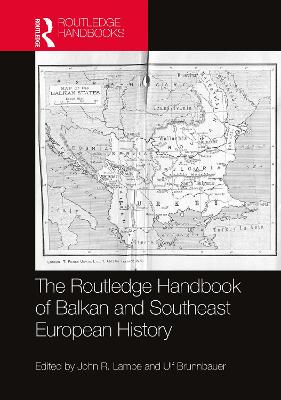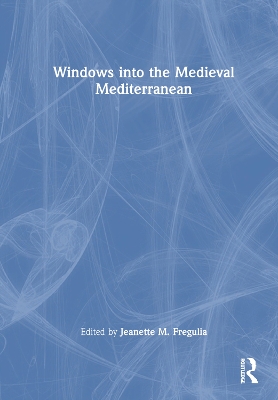Routledge Handbook of Balkan and Southeast European History
 -10%
portes grátis
-10%
portes grátis
Routledge Handbook of Balkan and Southeast European History
Brunnbauer, Ulf; Lampe, John R.
Taylor & Francis Ltd
10/2020
556
Dura
Inglês
9781138613089
15 a 20 dias
1056
Descrição não disponível.
Introductory overview: premodern borders and modern controversies PART I: The early modern Balkans as imperial borderlands Overview: the Balkans divided between three empires 1. Ottoman Albania and Kosovo, Albanians and Serbs, sixteenth-eighteenth centuries 2. The Venetian- Ottoman borderland in Dalmatia 3. The Phanariot regime in the Romanian Principalities, 1711/ 1716-1821 4. Ottoman Bosnia and the Bosnian Muslims PART II: Nation- and state- building, 1815-1914 Overview: nations and states between changing borders and the Great Powers in the "long" nineteenth century 5. Nineteenth- century national identities in the Balkans: evolution and contention 6. Bulgaria from liberation to independence, 1878-1908 7. Croatian political diversity and national development in the nineteenth century 8. Montenegro as an independent state, 1878-1912 9. The agrarian question in Romania, 1744-1921 10. Slovene clerical politics, cooperatives and the language question to 1914 11. Serbia's promise and problems, 1903-1914 12. The Macedonian question: asked and answered, 1878-1913 13. Austria- Hungary and the Balkans 14. Bosnia- Herzegovina under Austria- Hungary: from occupation to assassination, 1878-1914 PART III: The Balkan Wars and the First World War, 1912-1923 Overview: armies and occupations, peace settlements and forced migrations 15. Bulgaria's wars and defeats, 1912-1919 16. After empire: the First World War and the question of Albanian independence 17. Greece from national expansion to schism and catastrophe, 1912-1922 18. Habsburg South Slavs in peace and war, 1912-1918 19. From Salonica to Belgrade: the emergence of Yugoslavia, 1917-1921 PART IV: Southeastern European states and national politics, 1922-1939 Overview: the interwar decades from parliamentary struggles and international pressures to authoritarian regimes 20. Interwar ideas and images of nation, class, and gender 21. Interwar women's movements from the Little Entente to nationalism 22. Interwar Greece: its generals, a republic, and the monarchy 23. Bulgaria from Stamboliiski and IMRO to Tsar Boris, 1919-1943 24. The legion "Archangel Michael" in Romania, 1927-1941 25. Albania between Fan Noli, King Zog, and Italian hegemony 26. The Croat Peasant Party: from Stjepan Radic to Vladko Macek 27. Serbia, Kosovo, and Macedonia from revolt and resettlement to repression 28. Yugoslav identity in the interwar period PART V: Economies and societies, 1878-1939 Overview: challenges of change. Economic and population growth, social and cultural transformations up to World War II 29. Demographic growth: patterns and problems, 1878-1939 30. Financing economic growth and facing foreign debt, 1878-1939 31. Modern manufacture, state support, and foreign investment: comparing Balkan textile industries, 1878-1939 32. Neighbors into foreigners: the Greeks in Bulgaria, 1878-1941 33. Southeastern European overseas migration and return from the late nineteenth century until the 1930 34. Eugenics and race in Southeastern Europe 35. Sofia and Plovdiv between the world wars PART VI: From the Second World War to the establishment of the postwar regimes, 1939-1949 Overview: collaboration and occupation, resistance and civil war, regime change 36. The Albanian Communist Party from prewar origins to wartime resistance and power 37. Romania in the Second World War 38. The Usta s a regime and the politics of terror in the Independent State of Croatia, 1941-1945 39. Partisans and Chetniks in occupied Yugoslavia 40. An oppressive liberation: Yugoslavia 1944-1948 41. Greece from occupation and resistance to civil war, 1941-1949 PART VII: Cold War division and European transition, 1949-1989 Overview: communist regimes and the Greek exception 42. The collectivization of agriculture in Southeastern Europe 43. The Soviet factor in Bulgaria's foreign policy 44. Enver Hoxha's Albania: Yugoslav, Soviet, and Chinese relations and ruptures 45. Ceausescu's National Communism as National Stalinism 46. Yugoslavia's third way: the rise and fall of self-management 47. Greece's Cold War: exceptionalism in Southeastern Europe 48. Yugoslavia's political endgame: Serbia and Slovenia in the 1980s 49. Changes of social structure from the late 1940s to the 1980s 50. Financing industrialization, 1949-1989: from foreign aid to foreign debt PART VIII: Epilogue Epilogue: Southeastern Europe after the Cold War 51. Yugoslavia's wars of succession 1991-1999 52. From foreign intervention to European integration: Southeastern Europe since 1989
Este título pertence ao(s) assunto(s) indicados(s). Para ver outros títulos clique no assunto desejado.
Balkan Country;Former Yugoslavia;Balkan States;Bosnia-Herzegovina;South Slav;Maria Todorova;Southeastern Europe;Iron Curtain;Young Men;Nicolae Ceausescu;West Germany;Papandreou;HSS;Companion to Balkan History;King Aleksandar;Handbuch zur Geschichte Suedosteuaropas;Yugoslav Kingdom;Mark Mazower;UN;Sarajevo;Croat Lands;Mostar;Balkan Wars;Marshall Tito;Eastern Rumelia;Yugonostalgia;Greek Civil War;Bulgarian History;Ottoman Macedonia;Kosovo;King Zog;Srebenica;Romanian Communist Party;Gorazde;Yugoslav Patriotism;Smyrna;Independent Balkan States;Alexander the Great;Romanian Principalities;Ethnic Cleansing;Croat Peasant Party;Nationalism;Macedonian Front;Nationalist Violence;Bulgarian Communist Party;Ottoman Empire;Green Cadres;Ottomans;Bosnian Muslims;Izmir;Greek Diaspora;World War I;Isonzo Front;First World War;Second World War;World War II;South Slavs;Fan Noli;Enver Hoxha;Radovan Karadzic;Ratko Mladic;Tsar Boris;FYR Macedonia;Greek Orthodox Church;Uniate Church;Independent State of Croatia,1941-1944;Sarajevo Olympics;Belgrade;Plovdiv;Constantinople;Authoritarian politics;Southeast European history;Balkan;Communist regimes;Interethnic violence
Introductory overview: premodern borders and modern controversies PART I: The early modern Balkans as imperial borderlands Overview: the Balkans divided between three empires 1. Ottoman Albania and Kosovo, Albanians and Serbs, sixteenth-eighteenth centuries 2. The Venetian- Ottoman borderland in Dalmatia 3. The Phanariot regime in the Romanian Principalities, 1711/ 1716-1821 4. Ottoman Bosnia and the Bosnian Muslims PART II: Nation- and state- building, 1815-1914 Overview: nations and states between changing borders and the Great Powers in the "long" nineteenth century 5. Nineteenth- century national identities in the Balkans: evolution and contention 6. Bulgaria from liberation to independence, 1878-1908 7. Croatian political diversity and national development in the nineteenth century 8. Montenegro as an independent state, 1878-1912 9. The agrarian question in Romania, 1744-1921 10. Slovene clerical politics, cooperatives and the language question to 1914 11. Serbia's promise and problems, 1903-1914 12. The Macedonian question: asked and answered, 1878-1913 13. Austria- Hungary and the Balkans 14. Bosnia- Herzegovina under Austria- Hungary: from occupation to assassination, 1878-1914 PART III: The Balkan Wars and the First World War, 1912-1923 Overview: armies and occupations, peace settlements and forced migrations 15. Bulgaria's wars and defeats, 1912-1919 16. After empire: the First World War and the question of Albanian independence 17. Greece from national expansion to schism and catastrophe, 1912-1922 18. Habsburg South Slavs in peace and war, 1912-1918 19. From Salonica to Belgrade: the emergence of Yugoslavia, 1917-1921 PART IV: Southeastern European states and national politics, 1922-1939 Overview: the interwar decades from parliamentary struggles and international pressures to authoritarian regimes 20. Interwar ideas and images of nation, class, and gender 21. Interwar women's movements from the Little Entente to nationalism 22. Interwar Greece: its generals, a republic, and the monarchy 23. Bulgaria from Stamboliiski and IMRO to Tsar Boris, 1919-1943 24. The legion "Archangel Michael" in Romania, 1927-1941 25. Albania between Fan Noli, King Zog, and Italian hegemony 26. The Croat Peasant Party: from Stjepan Radic to Vladko Macek 27. Serbia, Kosovo, and Macedonia from revolt and resettlement to repression 28. Yugoslav identity in the interwar period PART V: Economies and societies, 1878-1939 Overview: challenges of change. Economic and population growth, social and cultural transformations up to World War II 29. Demographic growth: patterns and problems, 1878-1939 30. Financing economic growth and facing foreign debt, 1878-1939 31. Modern manufacture, state support, and foreign investment: comparing Balkan textile industries, 1878-1939 32. Neighbors into foreigners: the Greeks in Bulgaria, 1878-1941 33. Southeastern European overseas migration and return from the late nineteenth century until the 1930 34. Eugenics and race in Southeastern Europe 35. Sofia and Plovdiv between the world wars PART VI: From the Second World War to the establishment of the postwar regimes, 1939-1949 Overview: collaboration and occupation, resistance and civil war, regime change 36. The Albanian Communist Party from prewar origins to wartime resistance and power 37. Romania in the Second World War 38. The Usta s a regime and the politics of terror in the Independent State of Croatia, 1941-1945 39. Partisans and Chetniks in occupied Yugoslavia 40. An oppressive liberation: Yugoslavia 1944-1948 41. Greece from occupation and resistance to civil war, 1941-1949 PART VII: Cold War division and European transition, 1949-1989 Overview: communist regimes and the Greek exception 42. The collectivization of agriculture in Southeastern Europe 43. The Soviet factor in Bulgaria's foreign policy 44. Enver Hoxha's Albania: Yugoslav, Soviet, and Chinese relations and ruptures 45. Ceausescu's National Communism as National Stalinism 46. Yugoslavia's third way: the rise and fall of self-management 47. Greece's Cold War: exceptionalism in Southeastern Europe 48. Yugoslavia's political endgame: Serbia and Slovenia in the 1980s 49. Changes of social structure from the late 1940s to the 1980s 50. Financing industrialization, 1949-1989: from foreign aid to foreign debt PART VIII: Epilogue Epilogue: Southeastern Europe after the Cold War 51. Yugoslavia's wars of succession 1991-1999 52. From foreign intervention to European integration: Southeastern Europe since 1989
Este título pertence ao(s) assunto(s) indicados(s). Para ver outros títulos clique no assunto desejado.
Balkan Country;Former Yugoslavia;Balkan States;Bosnia-Herzegovina;South Slav;Maria Todorova;Southeastern Europe;Iron Curtain;Young Men;Nicolae Ceausescu;West Germany;Papandreou;HSS;Companion to Balkan History;King Aleksandar;Handbuch zur Geschichte Suedosteuaropas;Yugoslav Kingdom;Mark Mazower;UN;Sarajevo;Croat Lands;Mostar;Balkan Wars;Marshall Tito;Eastern Rumelia;Yugonostalgia;Greek Civil War;Bulgarian History;Ottoman Macedonia;Kosovo;King Zog;Srebenica;Romanian Communist Party;Gorazde;Yugoslav Patriotism;Smyrna;Independent Balkan States;Alexander the Great;Romanian Principalities;Ethnic Cleansing;Croat Peasant Party;Nationalism;Macedonian Front;Nationalist Violence;Bulgarian Communist Party;Ottoman Empire;Green Cadres;Ottomans;Bosnian Muslims;Izmir;Greek Diaspora;World War I;Isonzo Front;First World War;Second World War;World War II;South Slavs;Fan Noli;Enver Hoxha;Radovan Karadzic;Ratko Mladic;Tsar Boris;FYR Macedonia;Greek Orthodox Church;Uniate Church;Independent State of Croatia,1941-1944;Sarajevo Olympics;Belgrade;Plovdiv;Constantinople;Authoritarian politics;Southeast European history;Balkan;Communist regimes;Interethnic violence







